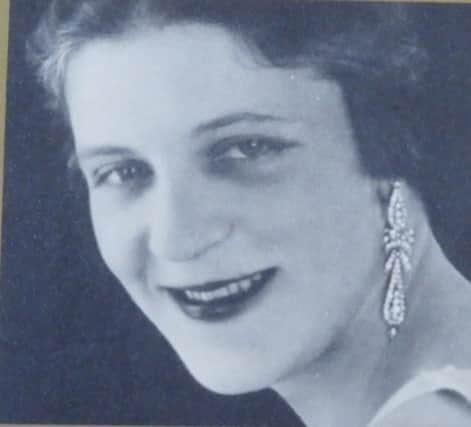Ulster History Circle blue plaque unveiled in Derrylin, Fermanagh, honour of WW2 heroine Monica de Wichfeld


The plaque was unveiled at Kinawley Parish Church, Derrylin, Fermanagh, in tribute to Monica de Wichfeld (nee Massy-Beresford) I894-I945.
Monica Massy-Beresford was born on 12th July 1894 at 7 Eaton Square, London, the daughter of John George Massy-Beresford and the Honourable Alice Elizabeth Mulholland, the daughter of John Mulholland, the 1st Baron Dunleath of Ballywalter.
Advertisement
Hide AdAdvertisement
Hide AdThe Massy-Beresford family came from Irish-Scottish stock. Ten days after her birth, Monica arrived at their Irish home, St, Hubert’s Geaglum, Derrylin and so began her early life in Co. Fermanagh.
In I9I6, Monica Massy-Beresford married Danish aristocrat and diplomat, Jorgen Wichfeld. She and Jorgen moved to his Engestofte Estate in Lolland, Denmark and Monica became a Danish citizen. Three children followed, Ivan, Varinka and Viggo.
In I94I, Monica, Jorgen and family were living on the estate at Engestofte in occupied Denmark. Without her husband’s knowledge, she became an active member of the underground Danish resistance. During the years until January I944, when her name was given to the Gestapo by one of her own comrades, Monica grew to lead the Lolland resistance and Engestofte became central to the recruitment, training, arming, planning, direction and organisation of the actions of the resistance. She was involved in harbouring RAF paratroopers and through the underground movement was able to have them returned to Britain.
In I944 she was arrested along with six other colleagues and tried before a Nazi court. All were found guilty and sentenced to death. Her companions were shot but owing to the intervention of the Queen of Denmark, who was a family friend, she was reprieved and her sentence commuted to life imprisonment.
Advertisement
Hide AdAdvertisement
Hide AdMonica was moved from Denmark to Germany and finally to Waldheim Prison Concentration Camp. Her health deteriorated badly and after having tuberculosis, she died of pneumonia on 27th February 1945, one month before the end of the war and 13 months after her captivity. Her body was never found.
Lady Dunleath, whose own father was a Danish resistance leader, unveiled the blue plaque at Saturday’s Remembrance Day service in Derrylin.